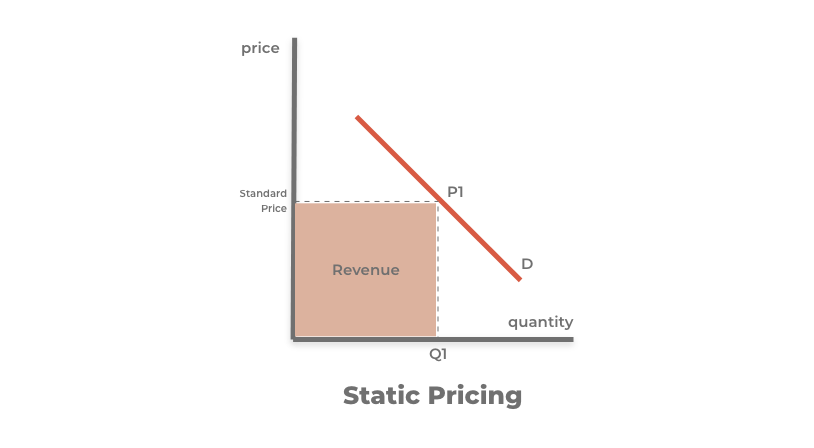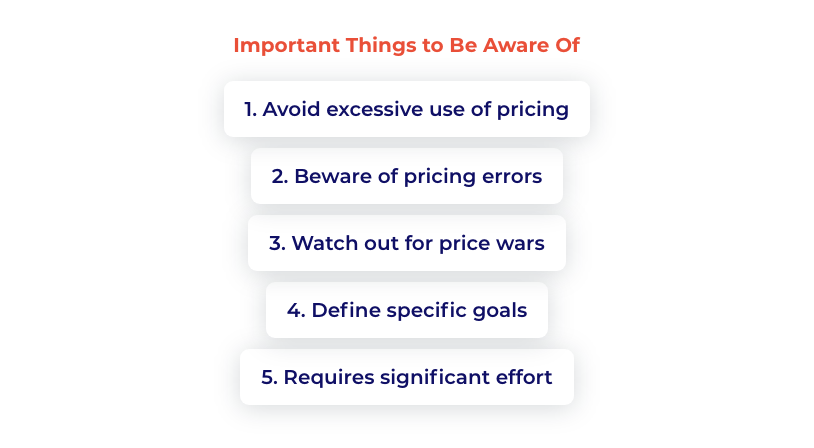5 ways dynamic pricing can maximize your retail profits
Maximize your retail profits with dynamic pricing! Explore 5 key strategies to stay ahead, attract more customers, and boost revenue.
In this blog, we will guide you through five key points to consider when using dynamic pricing in retail. But first, let's talk more about what dynamic pricing is.
What is dynamic pricing?
In today's competitive marketplace, businesses must adapt to rapid shifts in demand, competition, and market conditions. An effective strategy for e-commerce companies is dynamic pricing, where the price of a product changes in real-time to maximize profit and gain a competitive advantage.
Dynamic pricing is about being aware of market movements and competitors' prices. By analyzing factors such as demand, supply, and inventory status, businesses can make informed decisions about the prices of their products. This involves increasing prices when demand is high, competitors' prices are rising, and adjusting prices downward when competition increases or demand declines.

Dynamic pricing is particularly advantageous for an e-commerce business like yours, allowing you to respond quickly to market changes. Customers' ability to search and compare prices online means they can easily find the best deals. By implementing dynamic pricing, you can offer competitive prices and avoid falling behind competitors.
The key to dynamic pricing success is accessing and using relevant data effectively. You can make accurate pricing decisions by collecting and analyzing market trends, competitors' pricing, customer behavior, and product demand. Automated software and tools can be invaluable in providing real-time data and automating price adjustments based on established rules and goals.
How dynamic pricing fits into retail pricing strategies
Dynamic pricing is just one of many retail pricing strategies that businesses use to maximize revenue and stay competitive. To create a well-rounded pricing approach, retailers must understand how dynamic pricing interacts with other key pricing models, such as:
Cost-plus pricing vs. dynamic pricing
Cost-plus pricing is a straightforward approach where retailers set prices based on production costs plus a markup. While this method ensures consistent profit margins, it lacks the flexibility of dynamic pricing, which responds to real-time market demand. Combining both strategies allows businesses to maintain baseline profitability while optimizing prices for peak sales.
Competitive pricing & dynamic adjustments
Retailers often use competitive pricing to match or beat competitor prices. When integrated with dynamic pricing, businesses can automate price adjustments based on competitor activity, ensuring they stay ahead without constant manual updates.
Psychological pricing & perceived value
Techniques like odd-even pricing (e.g., $9.99 instead of $10) and bundling are part of retail pricing strategies that influence consumer behavior. Dynamic pricing can enhance these methods by adjusting prices in real-time based on customer response, maximizing both sales volume and perceived value.
Finding the right balance
While dynamic pricing is a powerful tool, it should complement—not replace—other retail pricing strategies. A successful pricing model combines elements of cost-based pricing, competitor analysis, and consumer psychology to ensure long-term profitability and customer trust.
5 Important things to be aware of
It is important to note that dynamic pricing is not synonymous with price discrimination or not making data-based decisions. It is about adjusting prices in real-time based on market dynamics to optimize your company's earnings, and with the right data, you can achieve the perfect pricing for your products.
Dynamic pricing can be complex, so we have compiled a list of considerations to keep in mind when incorporating it into your retail pricing strategies:

1 - Avoid excessive use of dynamic pricing in your retail pricing strategies
Dynamic pricing is one of the retail pricing strategies that can both benefit and harm your business. If you constantly change prices without communicating them to your customers, they will lose your trust and feel deceived by your service. Trust is crucial for repeat purchases of goods and services, so if your prices constantly fluctuate and are unpredictable, you risk losing your customers and their loyalty.On the other hand, if you communicate that your business "offers the customer the best price on the market" and draws attention to the often changing price, you can turn it to your advantage and avoid harming your business. By conveying this message, you also ensure that you do not lose customers to competitors but rather retain them by providing price guarantees.
2 - Beware of pricing errors
It is crucial to inform the consumer about the price of a product. It becomes binding if the price is clearly and prominently communicated to the customer. Therefore, erroneous pricing from your side can result in lost profit.A purchase agreement is binding as a starting point once the item is placed in the cart and paid for. However, an online store can make a reservation on their website stating that the purchase is only binding if both parties have accepted it. Such a reservation must be clearly and explicitly said before agreeing.
3 - Watch out for price wars
By using dynamic pricing, you follow the demand for a specific product. This also involves looking at how your competitors have priced the same product. As mentioned earlier, it has become easy for consumers to find the lowest price for a specific product, which often leads to companies trying to be the cheapest option to be chosen. If all companies only focus on being the most affordable in the market, it can lead to a price war where companies lower their prices in an escalating spiral.This is what many retailers fear when considering dynamic pricing as an option. Therefore, automation software like PriceShape can be helpful as it can ensure that a product is always priced at a selected minimum price. Additionally, PriceShape can also help drive market prices up as you can quickly observe what your competitors are doing, and if prices increase for several, others often follow.
4 - Define specific goals
It is important that your dynamic pricing is based on specific goals that you want to achieve. Do you want to be the cheapest in the market? What is your revenue goal? How many products do you want to sell, and how much profit do you want to achieve on each product? All these factors must be considered to achieve optimal dynamic pricing. Dynamic pricing always aims to have the right prices on your products, so you can improve your profit while retaining customer trust.5 - A good price strategy to use but requires significant effort
Implementing dynamic pricing in your business can be complex and time-consuming if done manually. Large amounts of data must be collected for each product, which must be done daily. If your company has many products, this can become an overwhelming and extensive project that requires many full-time employees to keep track of and collect all this data.We can help you implement dynamic pricing in your business. Our tool assists you in collecting and keeping track of the market and your competitors' prices. This data will help you establish the right pricing strategy based on the price rules you have defined in collaboration with your assigned Customer Success Manager.
Once the pricing strategy and rules are established for a specific product or category, the prices are automatically adjusted according to the chosen strategy. This can save your company time while gaining a competitive advantage and maintaining the same transparency your customers have.
Read more about why PriceShape is the right fit for your business.

